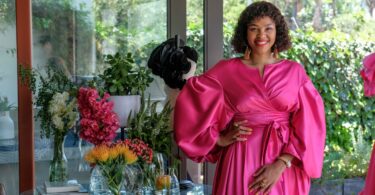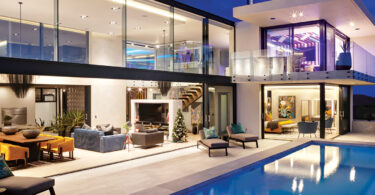I have always loved chandeliers. The exquisite beauty of some of the designs leaves many an interior in awe, and adds a touch of beauty – almost mystery – to a room, that no other light fitting can achieve.
In the early days
While researching the history of the chandelier, to see what humble beginnings the modern masterpieces shared, I was fascinated by how deep the historical roots of the chandelier go. Some sources say that the first chandeliers – known as candelabrum from the Latin candela, meaning candle – were used as early as the 10th century. These were generally wooden crosses with spikes on them to which candles could be secured. They were used mainly in abbeys, monasteries and churches, and were for the practical purpose of providing illumination.
As candelabrum continued in use across the 12th and 14th centuries, they were adopted by the wealthy upper class to symbolise status and fortune. Unfortunately the high maintenance nature of these early chandeliers meant for much activity around ornate and food-laden tables to keep the candles alight to cast the light they were tasked with providing – and prevent some nasty candle wax burns or worse.
From the 15th century, chandeliers started forming more complex and decorative structures, and the design that we are most familiar with – the crown – was seen more and more often. These found their way into the homes of clergy, noblemen, wealthy merchants and royalty, to mark their financial and status achievements.
As with most things, chandeliers became more and more commonplace, and by the 17th and 18th centuries were being enjoyed by the greater merchant class. It was in this 18th century that glassmaking introduced the production of cheaper lead crystal – which birthed the beauteous light-scattering forms of the refractive crystal chandelier.
The 19th century saw gas being used as the power behind illumination, and by the 1890s, electricity came into its own, and as the supply and dependability of electricity became more widely distributed, chandelier fixtures were designed to primarily support this form of power.
Designs grew in innovation and creativity through the 19th and 20th centuries, and towards the end of the 20th century, chandeliers began to be used mainly for their decorative value.
Contemporary evolution
The almost-mystical crystal chandelier formed a challenging “blueprint” for designers to mould new and exciting creations from. The minimalist and industrial themes gave way to simple yet powerful metal chandeliers with streamlined branches leading to lights often unadorned, or placed under dainty lampshades for a contrasting effect. Popular finishes include wrought iron and brass.
The curvy tubular forms of the blown Murano glass offer a canvas for stunning motifs ensconced in bright colours – the transparency of which creates a most amazing playground for colours to flirt with one another in their surroundings. These add tremendous interest to a room, and instead of the royal sparkle of crystal, create a kaleidoscopic welcome to a double-volume entrance hall.
In our space of retro revival, candle chandeliers are seeing a statement comeback – but are retrofitted with electric lights, which lends them security and lower maintenance than their ancestors.
However, one can not beat the nostalgic and romantic ambience of a traditional candle chandelier, be it paired with metal, crystal or glass – and for decorative purposes, these can be left unlit just for the pure pleasure of their presence.
Where shall it lie?
In the open design culture of our modern day, placement protocol for fittings and fixtures is thrown to the wind, and has given way to a more flexible and personal style of décor and design. This means that chandeliers need no longer be sequestered to the formal lounge or entrance hall, but can add either grace and elegance, or the striking wow factor, to pretty much any room in a home.
Cast sparkling twinkles on your oysters and champagne at the dinner table; or create a post-modern-medieval theme in your teenager’s room; add a surprising flourish to a magnificent bathroom; or prepare your family dinner in the kitchen while bathed in the warm glow of your chandelier.
For more lifestyle news visit EC Mirror Online.
[signature:kerry]












Leave a Comment